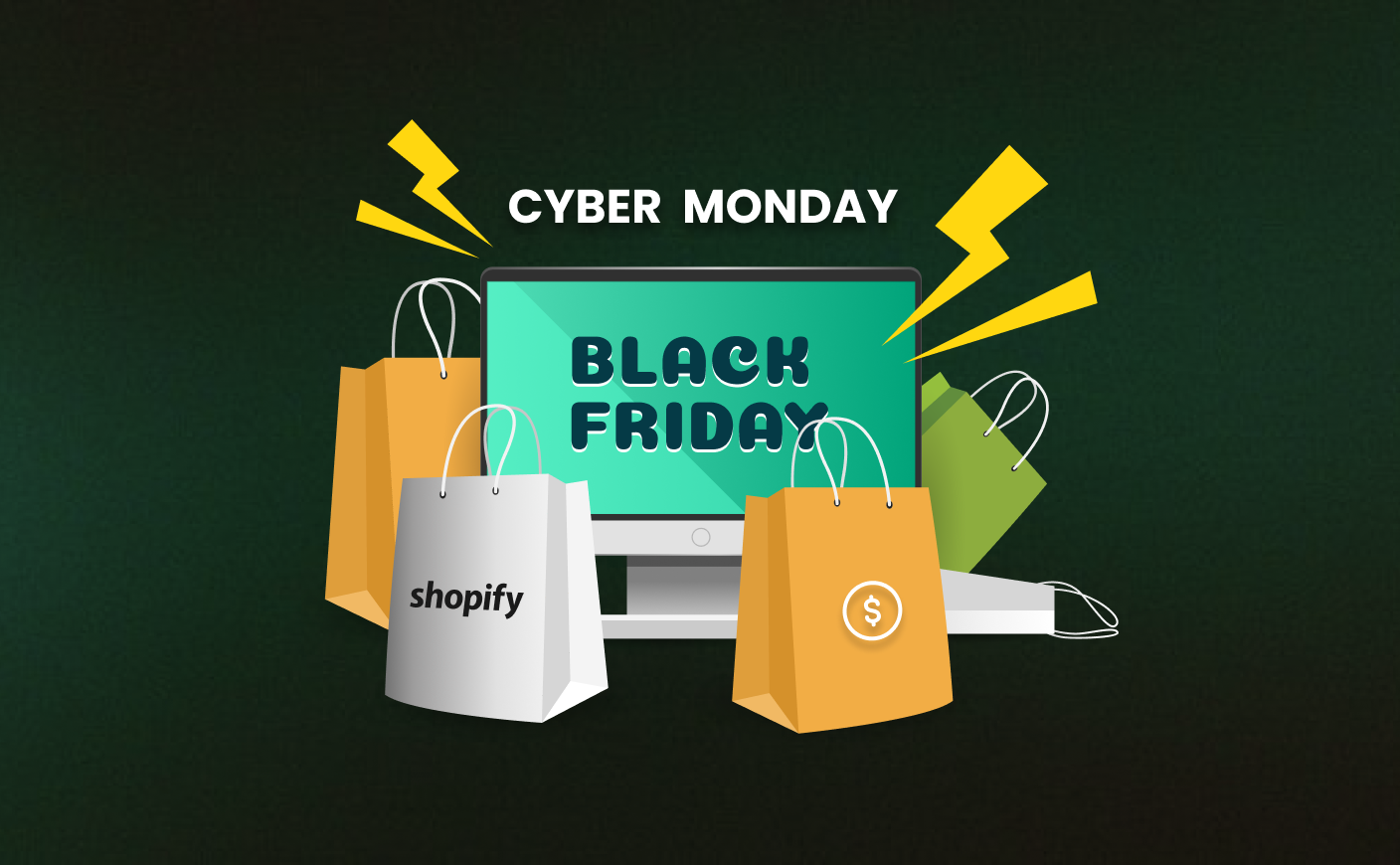The Shopify Sales Playbook: Increase Revenue with These Tips
shopify revenue
shopify sales
shopify sales playbook

Building a Shopify store is usually just the first step to enter into the world of ecommerce. To thrive, you need a powerful set of strategies to increase sales and customer engagement.
In this playbook, we will discover 10 actionable steps that you can take to drive your revenue growth.
Let’s begin.
10 Tips On How To Increase Your Shopify Sales
From identifying your brand’s unique appeal to ensuring a smooth customer checkout, these tips, paired with real-life examples, can increase your Shopify sales from average to exceptional.
Define Your Brand’s Unique Selling Point
Having a distinct unique value proposition (UVP) helps your store stand out from the competition. A strong UVP reflects your brand's character, values, and vision in addition to its products and prices.
For instance, the company Allbirds positions themselves as a sustainable footwear manufacturer. Its UVP isn't simply shoes; it's environmentally friendly footwear made of natural materials. This identity not only differentiates Allbirds from other shoe brands but also builds a loyal customer base that values sustainability.
How to Apply This: Consider what makes your goods special. Is it a specific material, design, or value-driven mission? You can strengthen the relationship between your brand and your customers by stressing this on your website, product pages, and social media accounts.
Leverage Customer Insights for Continuous Improvement
The finest people to get ideas for improving your store are frequently your customers. Receiving feedback—whether from surveys, reviews, or direct conversations—can provide useful suggestions for growth.
For instance, Grove Collaborative, an online retailer of natural products, introduces new, environmentally friendly product lines based on feedback from customers. By paying attention to their eco-aware customers, Grove continuously adjusts its products to satisfy them.
How to Apply This: Analyze customer reviews of your goods and services on a regular basis. Think about adding a review section, following up with surveys, or keeping an eye out for frequent trends or demands in customer comments. Taking action on these insights can improve client retention as well as the reputation of your brand.
Improve Credibility with Customer Testimonials
Trust is a significant factor in ecommerce success, and displaying customer reviews can instil confidence in new shoppers. Consumers prefer genuine reviews, which can have more influence on purchasing decisions than promotional material.
For instance, Sephora has an extensive rating system that lets users post pictures and write about their experiences. Potential customers get the power to make wise judgements thanks to this first-hand information.
How to Apply This: Encourage happy customers to leave reviews by including a review section on your product pages. Featuring video reviews or testimonials from prominent influencers in your niche can further enhance credibility.
TIP: Read our comprehensive CRO checklist.
Address Common Queries with Engaging Blog Content
A well-optimized blog brings in new clients through search engines and acts as an educational resource. Addressing frequently asked questions or relevant industry topics can position your store as an expert resource.
For instance, the blog of fitness clothing company Gymshark offers advice on how to take care of your clothes and how to work out. This content engages its target audience in addition to generating organic traffic.
How to Apply This: Identify the most frequent queries or problems that your clients have, then write blog entries to answer them. Include relevant keywords and add value by providing well-researched answers and practical tips.
Encourage Purchases with Free Shipping
For online customers, free delivery is one of the best incentives since it frequently eliminates a significant buying barrier. Studies show that offering free shipping can significantly reduce cart abandonment.
For instance, Zappos is well-known for offering free shipping and returns, allowing customers to shop with assurance. This approach has contributed to their high conversion rate.
How to Apply This: Try offering free shipping during certain periods or on orders over a specific limit. Highlight this benefit on your homepage and checkout page to encourage purchases.
Capture Missed Sales with Abandoned Cart Emails
Although cart abandonment is typical in ecommerce, you can recover some of these missed transactions by sending out targeted email reminders. Customizing these emails with tempting deals or reminders can encourage clients to finish their transactions.
For instance, Urban Outfitters contacts customers who have abandoned their carts with pictures of the things they left behind and a prompt to finish the transaction. Occasionally, they include a discount code to encourage the sale.
How to Apply This: Create an email sequence that is triggered when a customer leaves things in their cart. Use engaging language and consider adding an exclusive offer to increase the chances of conversion.
Increase Revenue with Strategic Add-Ons and Bundles
Providing similar products, often known as cross-sells or upsells, can raise the average order value in your store. Customers are encouraged to purchase more when complementary products or bundles are suggested, frequently at a perceived discount.
For instance, Amazon uses upsells by suggesting related products on each product page, frequently through a section titled "Frequently Bought Together." This approach has been instrumental in Amazon’s success.
How to Apply This: Add an upsell or cross-sell plugin to your Shopify store to automatically display related products or bundles on product pages or during checkout. You can boost results by modifying these recommendations to suit the needs of the consumer.
Also read: How to drive sales to your Shopify store in Q4?
Strengthen Trust with Clear Signals
Establishing trust is essential for any Shopify store. Customers can feel more confident about the safety and reliability of their purchases when trust indicators such as security badges, transparent return procedures, and validated reviews are included.
For instance, the online jewellery company Blue Nile employs trust signals like secure payment methods, a lifetime warranty, and free returns. This transparency helps customers feel more confident in making high-value purchases.
How to Apply This: Put trust badges next to your product and checkout pages. Make sure your return and refund policies are simple to locate. In addition, provide customer service contact information so that your buyers know they can get in touch with you if they need assistance.
Optimize Navigation for Easy Exploration
A cluttered website easily has the potential to drive away customers. Make sure that your Shopify store has clear navigation, with clear categories and product filtering options.
For instance, IKEA's website is easy to use, with filters that allow you to browse by room, category, or collection, as well as clear sections and a well-organised menu. The user experience is given top priority in this design, which promotes long browsing sessions.
How to Apply This: Add a search tool and arrange items into distinct categories to make your website easier to navigate. Check the flow of your website to make sure users can find products without having to click or scroll a lot.
Simplify Checkout to Prevent Abandonment
The checkout process must be easy, quick, and straightforward. It's critical to reduce the number of steps, provide a variety of payment options, and allow guest checkout since complicated checkouts can lead to higher cart abandonment rates.
For instance, Apple's online shop features a simple checkout procedure that reduces the number of steps, provides a variety of payment methods, and allows customers to pay using Apple Pay, which further simplifies the experience for mobile users.
How to Apply This: Review your mobile and desktop checkout procedures. Consider using Shopify’s one-page checkout option, offering guest checkout, and accepting popular payment methods like Apple Pay or Google Pay to improve conversion rates.
Final ThoughtsFinding a balance between knowing what your consumers need and using strategies that make it simple for them to buy from you is essential to increasing income on Shopify. From highlighting your brand's unique qualities to optimizing your checkout process, every upgrade contributes to a smooth, reliable buying experience. By applying these tips and learning from successful examples, you can drive growth, increase sales, and create a shopping experience that customers will return to again and again.
CrawlApps
At CrawlApps, we don’t just build Shopify stores—we create experiences that sell. We’re a bunch of problem-solvers who love turning ideas into stores that actually converts. Whether it’s fixing what’s broken or building something from scratch, we make sure every detail works in your favor. No fluff, no jargon—just real solutions that help your business grow. If you’re serious about Shopify, you’ll feel right at home with us.















